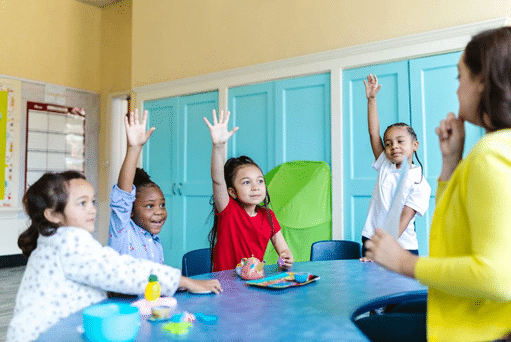Ask a Scientist: Are Reading Groups Effective?
In many elementary classrooms, small reading groups are a common strategy. Yet when we consider the research behind modern reading group practices, the evidence for their effectiveness varies greatly. Depending on a classroom’s individual and collective abilities, reading groups can be a highly impactful tool or a barrier to long-term reading success. Today, we explore the science behind reading groups and whether they are appropriate for today’s youngest cohort of readers.

When creating their reading curricula, new teachers often ask: are reading groups effective? The answers are mixed, but it’s clear that traditional ability-based or “leveled” groups don’t always work. In a Northwestern University Institute for Policy Research study of nearly 12,000 students from kindergarten through 3rd grade, none of the students initially placed in the lowest kindergarten group ever caught up to the reading level of their classmates who started out in the highest reading group. The researchers also noted the negative impact of systemic and teacher bias on students’ progress in the lowest reading group. Low-income students and students of color were more likely to be assigned to lower reading groups, and researchers surmised that the enduring impacts of perceiving oneself as a “lower reader” may discourage students from becoming lifelong readers.
In turn, teachers pose the essential question: how do we restructure reading groups to be less biased and more effective? Reading researchers offer a few ideas. As an alternative to ability grouping, which concentrated and worsened reading gaps over time in a recent longitudinal study, the science of reading points suggests that focusing on specific reading skills can help boost group effectiveness. A 2017 University of Minnesota study found that small reading groups which targeted a specific skill for improvement were nearly twice as effective on average as small groups that focused on comprehensive or multiple skill areas. While some form of grouping may be inevitable in large and varied classrooms, utilizing small reading group activities to target specific - and surmountable - reading challenges can improve students’ confidence through the accomplishment of bite-sized literacy goals.

Based on current research, a classroom founded on the science of reading can still include reading groups, provided that they target explicit reading challenges rather than arbitrary reading levels based on a single assessment and/or teachers’ perceptions. Whether or not teachers opt for small reading groups, researchers who focus on the K-3 age group emphasize the importance of well-prescribed lessons for modeling and guiding students in reading practices; the content of these lessons should address phonological awareness, phonics, word recognition, and fluency. These science of reading pillars can be folded into small group work, albeit in a structured fashion: overloading students with information may defeat the targeted nature of reading groups and promote burnout among both students and teachers. In the educational landscape of 2022, thoughtfully-designed reading groups can improve focus in both reading and STEM classes, reinforce explicit phonics instruction and other lessons taught to the entire classroom, and empower students to meet - and exceed - specific literacy goals.

Take-Aways:
- Reading teachers commonly assign students to reading groups based on their abilities and other factors, which runs the risk of dividing students into groups based on systemic biases.
- When based on bias rather than the science of reading, researchers find that small reading groups are not consistently effective and may even widen reading gaps.
- However, when teachers design reading groups based on specific literacy goals rather than arbitrary ability levels, students are more likely to find motivation and success in the pursuit of a targeted reading milestone.
- To reinforce explicit phonics instruction and enrich their students’ reading experience, teachers may be able to incorporate these goal-oriented reading groups into their teacher toolkit.
Start Teaching Reading for Free Now!
Access Level 1’s four interactive stories and the accompanying supplemental resources to teach elementary students how to read. No credit card is needed. Join the 42,635 teachers and students using our reading program.
